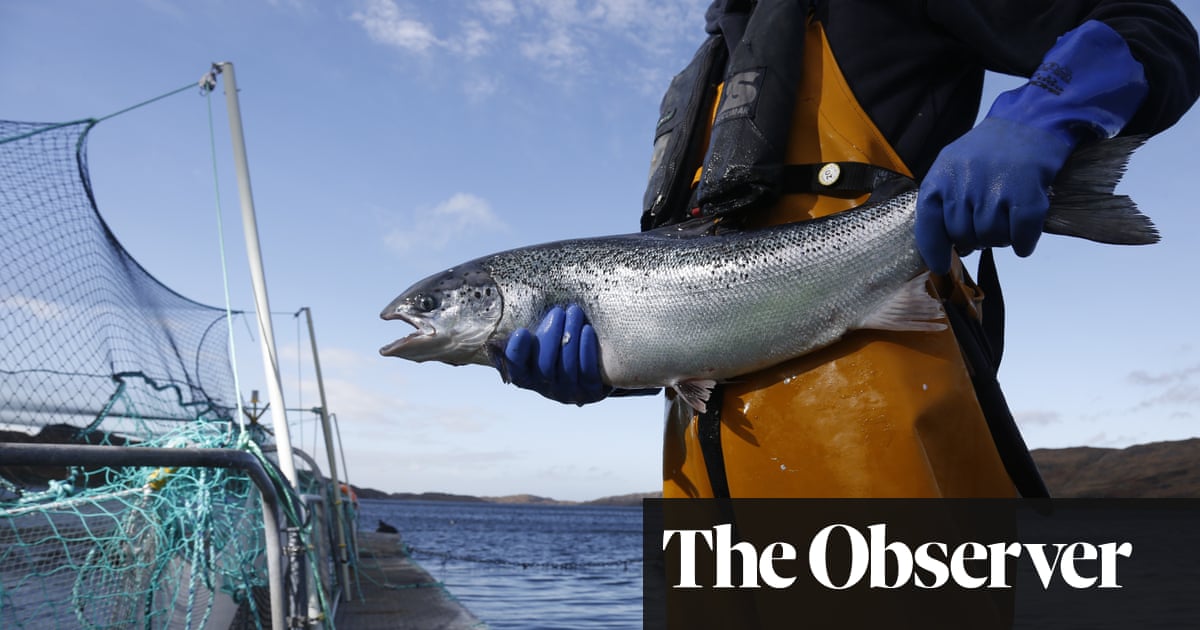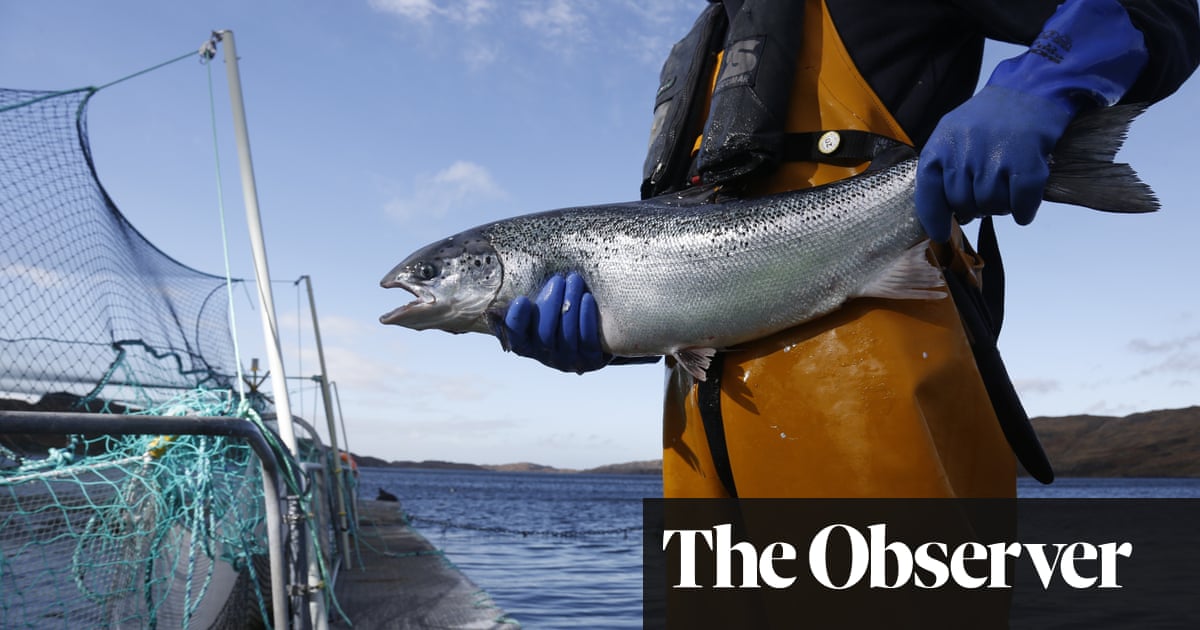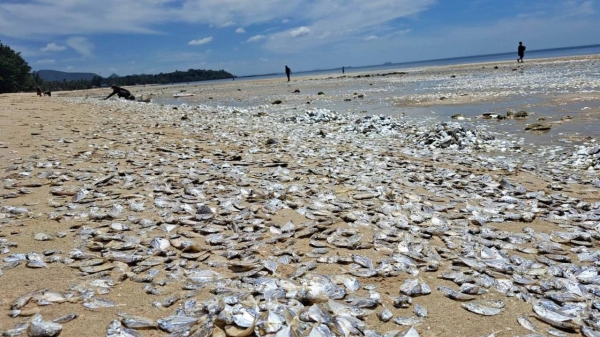
Salmon deaths on fish farms in Scotland nearly doubled last year, official figures show, owing to growing levels of disease, parasites and jellyfish blooms. Campaigners have blamed overcrowding and called for a boycott.
Fish Health Inspectorate (FHI) data shows that nearly 15m salmon mortalities were reported by farms in Scotland from January to November 2022, the latest data available, compared with 8.58m in all of 2021 and 5.81m in 2020.
Production of Atlantic salmon has been broadly stable at about 200,000 tonnes a year for the last four years, with some estimates that up to 77m fish are farmed annually.
Salmon farmers blamed the increase on unusually large numbers of micro-jellyfish that swarmed in British waters last year, a phenomenon that may be related to climate breakdown, but Abigail Penny, executive director of Animal Equality UK, said overcrowding in salmon farms was to blame.
“Deaths in fish pens have reached record levels for a number of reasons,” she said, “including a sharp rise in infectious diseases among the fish who are packed into unnaturally overcrowded cages, as well as poor gill health and rough treatments to remove lice from the infested waters.
“As the industry grows, so do these issues. We must take back the power and boycott farmed fish – it’s the only way that we can begin to curb this ever-worsening problem.”
The Fish Health Inspectorate, part of Marine Scotland, is responsible for monitoring the 213 seawater sites in Scotland farming salmon. The farms have a voluntary agreement to report salmon deaths over certain thresholds, a Scottish government spokesman said.
“The mortality reports list multiple factors – for example gill issues, bacterial or viral infection, handling, or predation – so it is not always possible to allocate mortalities to a specific cause,” the spokesman said.
“However, gill health remains a key issue. There has been an increase in attributing environmental issues, including jellyfish and plankton blooms, and bacterial infections as a cause of mortalities in 2022.”
The seas around the UK have growing numbers of jellyfish, according to the Marine Conservation Society.
Salmon accounts for 29% of all fish sold to UK consumers, who spent £1.2bn in shops last year, and about a quarter of Scottish salmon is exported.
Atlantic salmon are raised in net pens up to 160 metres wide in Scottish waters including its longest sea loch, Loch Fyne, which means the farms are exposed to the natural environment and marine ecosystems are affected by farming.
During their two-year life cycle, farmed salmon are vulnerable to rough weather, predators such as seals and to sea lice and diseases, particularly when the waters are warmest during September and October.
Drone footage collected by Animal Equality UK shows workers using a “mort sock” to dredge dead fish from the bottom of pens.
“I’ve kayaked out to farms at 5am in the summer when it’s light, before they’ve got to work, and you see dead fish lying belly up at the top of the cages,” said Don Staniford, of the Scamon Scotland campaign. “The others have sunk to the bottom. So the first thing they do is collect the dead fish.”
Staniford said the FHI figures on salmon deaths were likely to be an underestimate because not all mortalities need to be recorded.
“About 25% of the salmon in sea cages are dying, so that’s about one in four,” he said. “If ramblers saw one in four cows or sheep dead in a field they’d be horrified, but because it’s underwater it’s out of sight, out of mind.”
He pointed to sites with huge mortality rates, with one farm in Loch Nevis reporting a cumulative 64% death rate last November. “There is no ethical way to farm salmon,” he said. “They’re freeloading on the Scottish environment, impacting on local communities who depend on tourists, and there’s an impact on the welfare of farm fish.”
Salmon Scotland said that jellyfish blooms can force a site to be closed down, or fallowed, with farmers harvesting all the fish.
Tavish Scott, chief executive of the industry body, said: “Wild Atlantic salmon has a survival rate of only around 1 to 2%, compared to around 85% for a farm-raised salmon.
“Throughout the year there will be different environmental pressures that affect survival rates. Farm-raised Scottish salmon typically face the biggest challenges in the autumn when seawater temperatures peak.
“Salmon farmers look after their fish daily and do everything they can to provide world-leading animal health and welfare standards so it’s devastating when the fish in their care fall to naturally occurring challenges.
“We are working with industry and academia to develop an early-warning system that helps to safeguard fish from jellyfish blooms in the future.”












